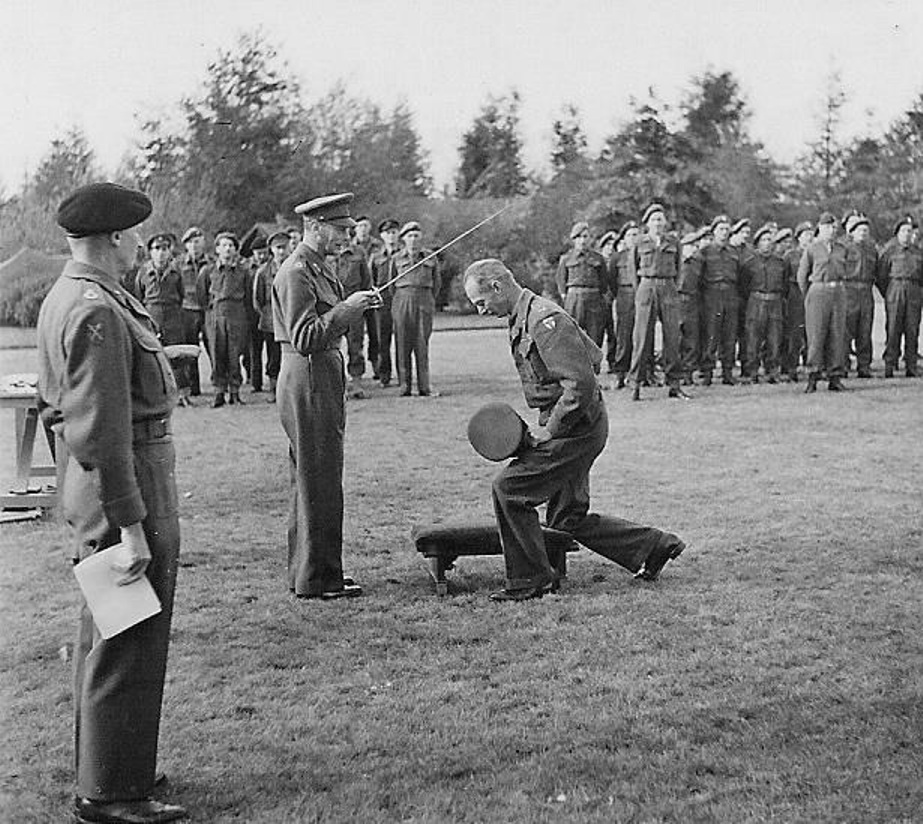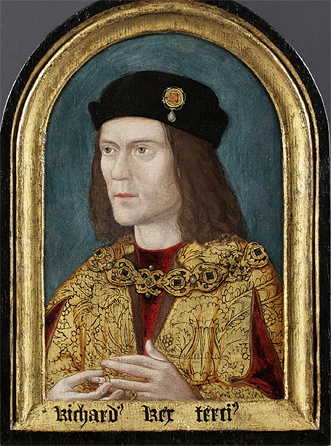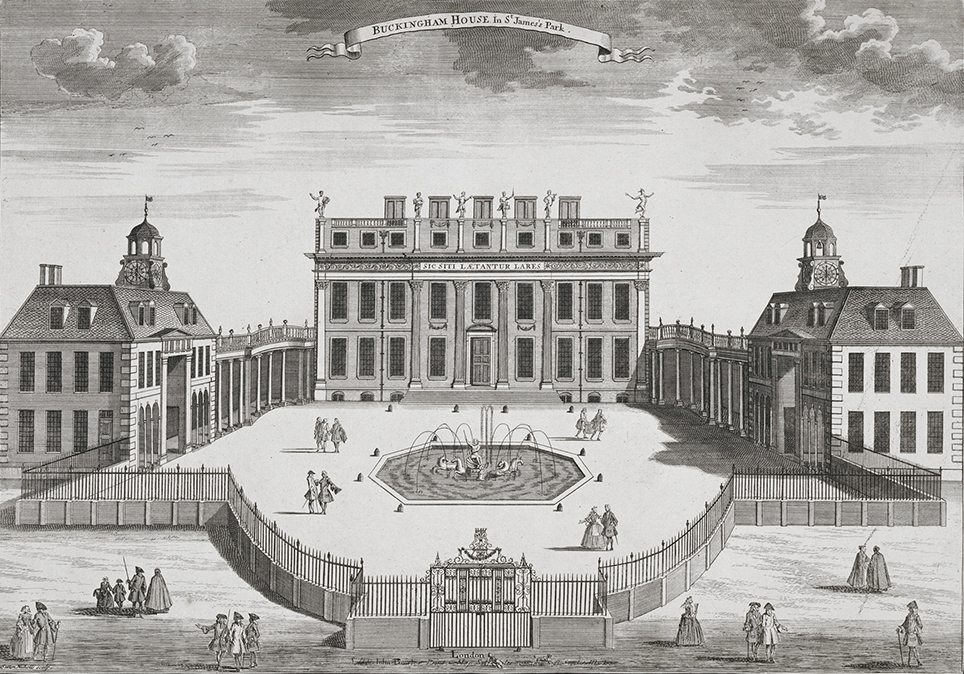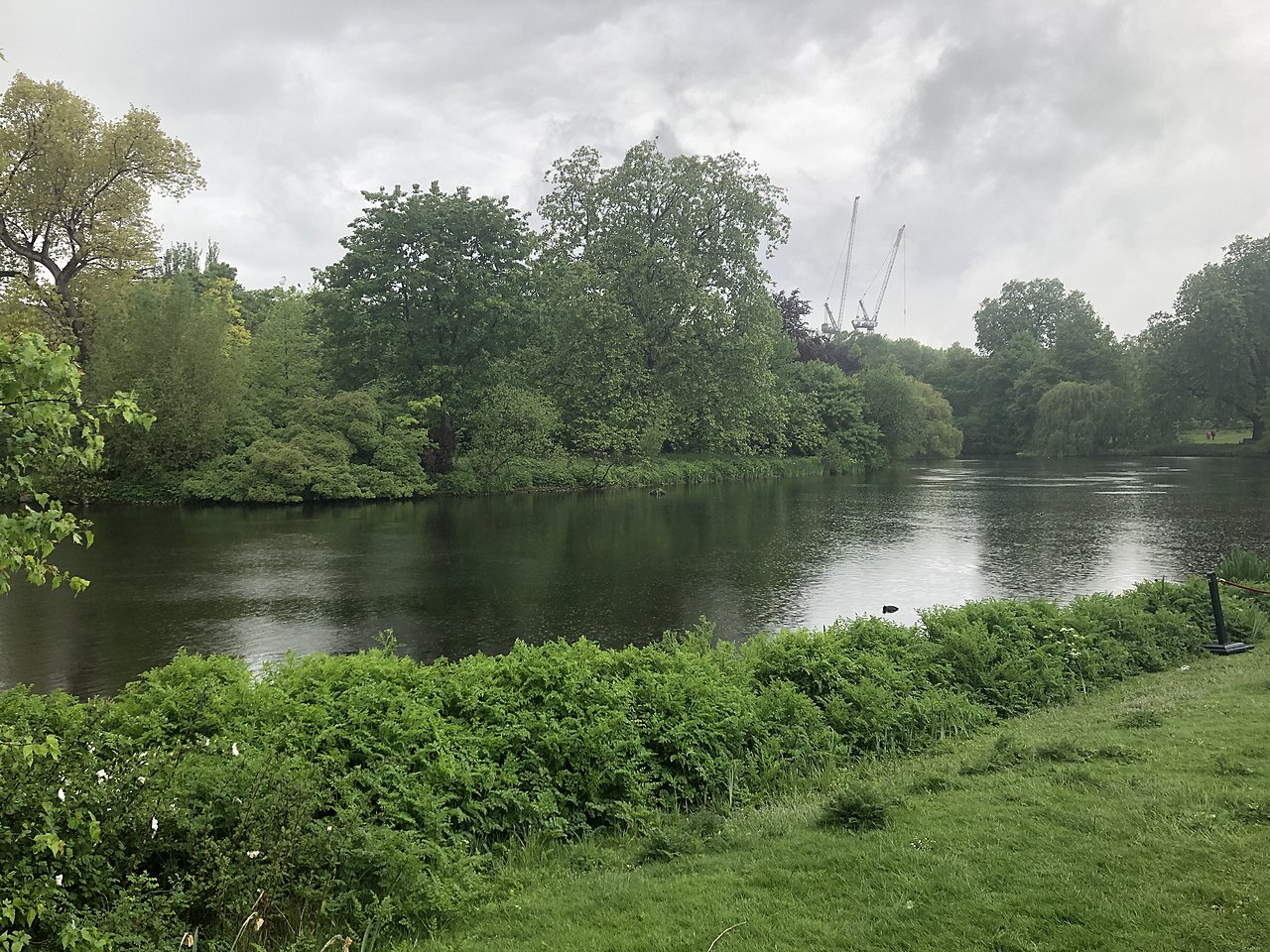by Susan Flantzer
© Unofficial Royalty 2024
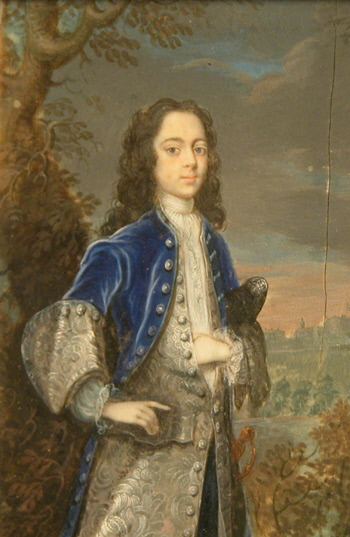
Charles Fitzroy, 2nd Duke of Cleveland, 1st Duke of Southampton; Credit – Wikipedia
Despite fathering many illegitimate children with his mistresses, King Charles II of England had no children with his wife Catherine of Braganza. Charles II is an ancestor through his mistresses of many British aristocrats and of several women who married into the British Royal Family. Lucy Walter and Charles II are ancestors of Sarah, Duchess of York and Princess Alice, Duchess of Gloucester. Barbara Palmer, 1st Duchess of Cleveland and Charles II are ancestors of Diana, Princess of Wales and Sarah, Duchess of York. Louise Renée de Penancoet de Kérouaille, Duchess of Portsmouth and Charles II are ancestors of Diana, Princess of Wales, Queen Camilla, and Sarah, Duchess of York.
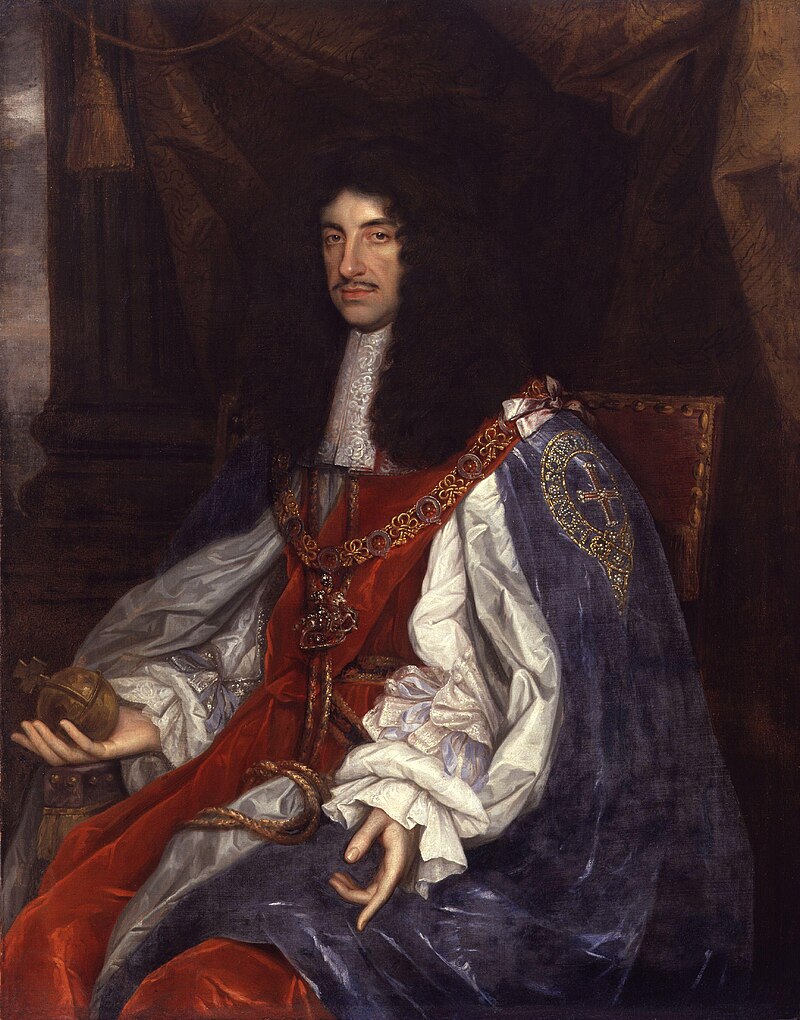
King Charles II of England; Credit -Wikipedia
On June 18, 1662, in London England, Charles Fitzroy, 2nd Duke of Cleveland, 1st Duke of Southampton was born. The surname FitzRoy comes from the Anglo-Norman Fitz, meaning “son of” and Roy, meaning “king”, implying the original bearer of the surname was a child of a king. Charles was the illegitimate son of King Charles II of England and one of his mistresses Barbara Palmer, 1st Duchess of Cleveland in her own right. Charles’s paternal grandparents were King Charles I of England and Henrietta Maria of France (the daughter of King Henri IV of France and his second wife Marie de’ Medici). His maternal grandparents were William Villiers, 2nd Viscount Grandison and Mary Bayning.
In 1642, the English Civil War broke out between King Charles I and the Parliamentarian and Puritan forces. When the situation deteriorated in the spring of 1646, the future King Charles II, then Prince of Wales, was sent out of England. The execution of King Charles I on January 30, 1649, made his son Charles the de jure King of England. Until the Stuart Restoration in 1660, when the Stuart monarchy in the kingdoms of England, Scotland, and Ireland was restored and King Charles II returned to England, he lived in exile in various places.

Charles’ mother Barbara Palmer, 1st Duchess of Cleveland; Credit – Wikipedia
Charles’ mother was born in 1640 as Barbara Villiers, the only child of William Villiers, 2nd Viscount Grandison and Mary Bayning. In 1643, Barbara’s father died in the First English Civil War, leaving his 18-year-old widow and his three-year-old daughter in financial difficulty. Barbara’s mother soon married Charles Villiers, 2nd Earl of Anglesey, her late husband’s cousin. The marriage was childless and Barbara’s stepfather died from smallpox in 1661. Barbara was considered one of the most beautiful of the young Royalist women but her lack of a dowry did not help her marriage prospects. In 1659, Barbara married the Roman Catholic Roger Palmer, later 1st Earl of Castlemaine, against his family’s wishes.
At the end of 1659, Roger and his new wife left with other supporters of the exiled Charles, Prince of Wales (the future King Charles II) joining him in the Spanish Netherlands. In 1660, Barbara became King Charles II’s mistress. After years of exile during the Commonwealth, on May 1, 1660, Parliament formally invited Charles, as King Charles II, to be the English monarch in what has become known as the Restoration. On May 23, 1660, Charles landed in Dover, England, and on his 30th birthday, May 29, 1660, King Charles II entered London in a procession.
Besides Charles, Barbara gave birth to five other children and it is surmised that they were all the children of King Charles II. Through their children, Barbara Palmer and King Charles II are the ancestors of Diana, Princess of Wales and Sarah, Duchess of York, and their children Prince William, Prince Harry, Princess Beatrice, and Princess Eugenie. As a reward for Barbara’s services, Charles II created Roger Palmer Earl of Castlemaine in 1661.
The children of Barbara Palmer, probably the children of King Charles II, and therefore, probably the full siblings of Charles Fitzroy, 2nd Duke of Cleveland, 1st Duke of Southampton:
- Lady Anne FitzRoy (1661 – 1721), married Thomas Lennard, 15th Baron Dacre, 1st Earl of Sussex, had four children
- Henry FitzRoy, 1st Duke of Grafton (1663–1690), married Isabella Bennet, 2nd Countess of Arlington, had one son
- Lady Charlotte FitzRoy (1664–1717), married Edward Lee, 1st Earl of Lichfield, had eighteen children
- George FitzRoy, 1st Duke of Northumberland (1665–1716), married (1) Catherine Wheatley, no children (2) Mary Dutton, no children
- Barbara FitzRoy (1672–1737), unmarried, became a nun taking the name Sister Benedicta; her mother claimed that she was Charles II’s daughter but she was may have been the child of her mother’s second cousin and lover John Churchill, later 1st Duke of Marlborough

Barbara Palmer with her son Charles FitzRoy as Madonna and Child; Credit – Wikipedia
Charles, initially known as Charles Palmer, was registered as the son of his mother’s husband the Roman Catholic Roger Palmer, and was styled Lord Limerick, one of Palmer’s subsidiary titles. Thinking the infant was his son, Palmer had him baptized as a Roman Catholic. Within a few days, the infant Charles was re-baptized again as a member of the Church of England at the Church of St. Margaret’s, Westminster with King Charles II as one of his godparents, declaring, “He is my son.”
In 1670, Charles’ mother Barbara Palmer was created Duchess of Cleveland in her own right. The dukedom was created with a special remainder allowing it to be inherited by her first son Charles and his heirs male, despite her son being illegitimate. That same year, King Charles II officially recognized Charles as his son. Charles then used the surname FitzRoy and was styled Earl of Southampton, the subsidiary title of his mother who had been created Duchess of Cleveland in her own right. In 1675, King Charles II created his son Duke of Southampton.
Also in 1670, Charles was betrothed to Mary Wood, the only child and the heiress of Sir Henry Wood, 1st Baronet, Clerk of the Green Cloth, and Mary Gardiner, a daughter of the Royalist Sir Thomas Gardiner of Cuddesdon. Sir Henry served as Treasurer to Queen Henrietta Maria. His wife was a Maid of Honor to Queen Henrietta Maria and one of the four Dressers of King Charles II’s wife Catherine of Braganza. Mary Wood’s mother died of smallpox in 1671 and her father also died the same year. Following her father’s death in 1671, Mary went to live with Charles’s mother Barbara Palmer. In 1679, Charles and Mary were married but a year later, sixteen-year-old Mary died, like her mother, of smallpox. After many legal maneuvers, Mary’s fortune passed to her widower 18-year-old Charles Fitzroy who remained unmarried for fourteen years.
In 1694, 32-year-old Charles married Anne Pulteney, daughter of Sir William Pulteney, a Member of Parliament.
Charles and Anne had six children:
- Lady Barbara FitzRoy (1696 – ?), unmarried
- Lady Grace FitzRoy (1697 – 1763) married Henry Vane, later Earl of Darlington, had seven children
- William FitzRoy, 3rd Duke of Cleveland and 2nd Duke of Southampton (1698 – 1774), married Henrietta Finch, no children
- Lord Charles FitzRoy (1698 – 1723), unmarried
- Lord Henry FitzRoy (1701 – 1709), died in childhood
- Lady Anne FitzRoy (1702 – 1769), married John Paddey, no children
In 1688, the Glorious Revolution forced Charles’s paternal uncle King James II of England to vacate the throne in favor of his daughter (and Charles’s first cousin) Queen Mary II and her husband and first cousin (also Charles’s first cousin) King William III. Unlike his sister Anne, who joined the former King James II in exile in France, Charles remained in England. Despite not following his uncle, Charles, along with several other peers – his brother Henry FitzRoy, 1st Duke of Grafton, his brother George FitzRoy, 1st Duke of Northumberland, his brother-in-law Edward Lee, 1st Earl of Lichfield, and his brother-in-law William Paston, 2nd Earl of Yarmouth, opposed the offer of the crown to William and Mary. In 1691, Charles was suspected of plotting to restore his uncle, the former King James II, to the throne. After an unsuccessful Jacobite attempt to ambush and kill King William III in 1696, Charles signed the Association of 1696 which pledged loyalty to King William III (Queen Mary died in 1694). Thereafter, although he was partial to his uncle James II, Charles accepted the right of King William III to reign.
When Charles’ mother Barbara Palmer, 1st Duchess of Cleveland died on October 9, 1709, aged 68, he became 2nd Duke of Cleveland. On September 9, 1730, 68-year-old Charles FitzRoy, 2nd Duke of Cleveland died in London, England. He was succeeded by his eldest son William FitzRoy. However, William was childless and when he died in 1774, all his titles became extinct.

Burial site of Charles Fitzroy, 2nd Duke of Cleveland; Credit – By 14GTR – Own work, CC BY-SA 4.0, https://commons.wikimedia.org/w/index.php?curid=123825812
Charles FitzRoy, 2nd Duke of Cleveland was buried on November 3, 1730, at Westminster Abbey in the Duke of Ormond’s vault, now the Royal Air Force Chapel, at the east end of Henry VII’s Chapel. Charles’ second wife Anne Pulteney, survived him by sixteen years, dying on February 20, 1746, aged 82, and was interred with her husband. Those interred in the Duke of Ormond’s vault have no monument. Their names were inscribed on a stone over the vault only in the late 19th century when Arthur Stanley, Dean of Westminster viewed the coffins in the vault. Now a carpet with the Royal Air Force insignia permanently covers the stone with the inscription of the names.
This article is the intellectual property of Unofficial Royalty and is NOT TO BE COPIED, EDITED, OR POSTED IN ANY FORM ON ANOTHER WEBSITE under any circumstances. It is permissible to use a link that directs to Unofficial Royalty.
Works Cited
- Beauclerk-Dewar, Peter & Powell, Roger. (2006). Right Royal Bastards – The Fruits of Passion. Burke’s Peerage & Gentry LLC.
- Flantzer, Susan. (2020). Barbara Palmer, 1st Duchess of Cleveland, Mistress of King Charles II of England. Unofficial Royalty. https://www.unofficialroyalty.com/barbara-palmer-1st-duchess-of-cleveland-mistress-of-king-charles-ii-of-england/
- Flantzer, Susan. (2016). King Charles II of England. Unofficial Royalty. https://www.unofficialroyalty.com/king-charles-ii-of-england/
- Fraser, Antonia. (2002). King Charles II. Phoenix.
- Weir, Alison. (2008). Britain’s Royal Families – The Complete Genealogy. Vintage Books.
- Wikimedia Foundation. (2024). Charles FitzRoy, 2nd Duke of Cleveland. Wikipedia. https://en.wikipedia.org/wiki/Charles_FitzRoy,_2nd_Duke_of_Cleveland







